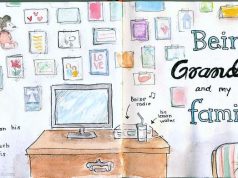In today’s fast-paced work environment, stress and anxiety have become common companions for many professionals. The constant pressure to meet deadlines, juggle multiple responsibilities, and maintain a work-life balance can take a toll on both mental and physical well-being. Recognizing and managing these feelings is crucial not only for personal health but also for maintaining productivity and job satisfaction. In this article, we will explore practical and effective strategies to help you navigate the challenges of stress and anxiety in the workplace. By adopting these tips, you can create a more harmonious and fulfilling work experience, paving the way for both personal and professional growth. Whether you’re feeling overwhelmed by your current workload or seeking proactive ways to maintain your well-being, these insights are designed to support you on your journey toward a healthier work life.
Recognizing the Signs of Stress and Anxiety in the Workplace
Identifying stress and anxiety in the workplace can often be challenging as symptoms might not always be obvious. However, being aware of the subtle signs can make a significant difference. Some common indicators include:
- Increased absenteeism or tardiness
- Decline in productivity or work quality
- Frequent complaints of headaches or fatigue
- Noticeable changes in mood or behavior
In some cases, these signs might manifest as physical symptoms, emotional responses, or changes in behavior. Recognizing these signals early can prevent further complications and foster a healthier work environment.
| Sign | Description |
|---|---|
| Physical | Headaches, muscle tension, insomnia |
| Emotional | Irritability, depression, mood swings |
| Behavioral | Procrastination, increased errors, withdrawal |
By fostering an environment where team members feel comfortable expressing their challenges, and by promoting open communication, organizations can mitigate these signs of stress and anxiety, ultimately supporting a more resilient workforce.

Creating a Calming Work Environment to Enhance Focus and Well-being
Creating a serene workspace is essential for maintaining focus and boosting overall well-being. To start, consider your physical surroundings. Declutter your desk to reduce visual distractions and promote a sense of calm. Introduce elements of nature, such as small plants or a water feature, which can help soothe the mind. You might also experiment with lighting by using soft, warm lights instead of harsh fluorescents to create a more inviting atmosphere.
In addition to physical changes, mindful practices can greatly contribute to a calming environment. Consider incorporating short meditation breaks into your routine. Even just five minutes of deep breathing or guided meditation can help reset your mind and reduce stress. If you’re working remotely, use noise-cancelling headphones to play soft background music or nature sounds, which can aid concentration and mask distracting noises.
- Set boundaries: Clearly define work hours and personal time to prevent burnout.
- Personalize your space: Add personal touches like family photos or motivational quotes to create a comforting environment.
- Stay organized: Use planners or digital tools to manage tasks efficiently and reduce anxiety.
| Element | Impact |
|---|---|
| Plants | Boosts mood and air quality |
| Warm Lighting | Reduces eye strain and enhances relaxation |
| Meditation | Improves focus and reduces stress |

Mindfulness Techniques to Stay Grounded During High-pressure Situations
In the whirlwind of deadlines and meetings, it’s easy to feel overwhelmed. However, integrating mindfulness into your daily routine can act as an anchor, helping you maintain your calm and focus. Here are some practical techniques:
- Deep Breathing: Take a moment to breathe deeply. Inhale slowly through your nose, hold for a count of four, and exhale gently through your mouth. This simple exercise can slow your heart rate and reduce anxiety almost instantly.
- Body Scan: Close your eyes and focus on each part of your body, starting from the toes and working your way up to the head. Notice any tension and consciously release it. This technique enhances self-awareness and promotes relaxation.
- Mindful Observation: Choose an object in your vicinity and spend a few minutes observing it closely. Notice its color, shape, and texture. This practice can help redirect your mind from stress to a state of calm attentiveness.
| Technique | Duration | Benefits |
|---|---|---|
| Deep Breathing | 2-5 minutes | Reduces anxiety, calms the mind |
| Body Scan | 5-10 minutes | Enhances self-awareness, promotes relaxation |
| Mindful Observation | 3-5 minutes | Redirects focus, increases calmness |
Embracing these mindfulness techniques can transform high-pressure moments into opportunities for growth and clarity. Remember, the goal is not to eliminate stress but to manage it effectively.

Effective Communication Strategies to Address Work-related Stress
- Active Listening: One of the most powerful tools in reducing stress and anxiety at work is active listening. This involves not just hearing but truly understanding your colleagues’ concerns. By engaging fully in conversations, you can help create a supportive environment where team members feel heard and valued.
- Open Dialogue: Foster a culture of open dialogue by encouraging team members to express their thoughts and feelings without fear of judgment. Regular check-ins or team meetings where stressors can be discussed can help identify issues early and prevent them from escalating.
Incorporating effective communication strategies can transform how stress is managed in the workplace. Consider the following table that outlines a few simple strategies and their potential benefits:
| Strategy | Benefit |
|---|---|
| Regular Feedback | Clarifies expectations and reduces uncertainty |
| Empathy | Builds trust and strengthens relationships |
| Non-verbal Cues | Enhances understanding beyond words |
By implementing these strategies, workplaces can become more supportive and less stressful environments. Remember, communication is not just about exchanging information; it’s about understanding the emotions and intentions behind the information.








































